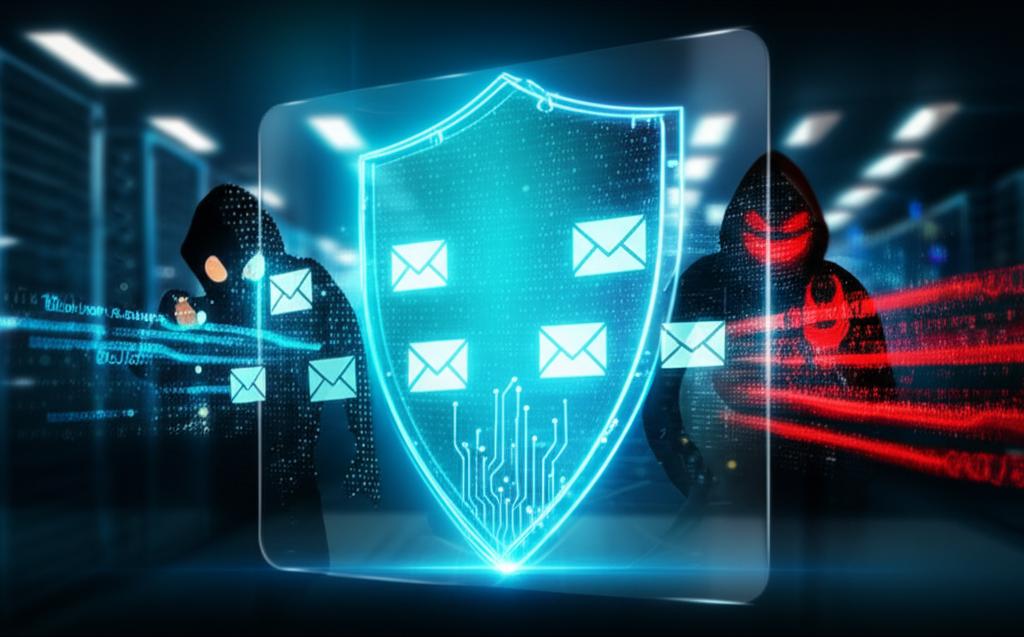Fortify Your Business: The Crucial Role of Enterprise Email Security
Understanding Enterprise Email Security: Your Digital Fortress
In today’s interconnected business world, email remains the primary communication channel, making it a critical asset and, unfortunately, a prime target for cybercriminals. Enterprise Email Security isn’t just about blocking spam; it’s a comprehensive, multi-layered strategy designed to protect an organization’s most vital digital communication infrastructure. It encompasses a suite of advanced technologies, stringent policies, and best practices aimed at defending against a wide array of sophisticated cyber threats, ensuring the integrity, confidentiality, and availability of all email communications and associated data.
Without robust Enterprise Email Security measures in place, businesses face severe and escalating risks, ranging from significant financial losses and data breaches to severe reputational damage and legal ramifications.
The Evolving Landscape of Email Threats
Cyber threats are constantly evolving in sophistication and frequency, targeting vulnerabilities within email systems. Organizations must be prepared to defend against:
- Phishing & Spear Phishing: Deceptive emails crafted to trick recipients into revealing sensitive information (like login credentials) or clicking malicious links that lead to malware infections.
- Malware & Ransomware: Attacks delivered via email attachments or links, designed to compromise systems, steal data, or encrypt files until a ransom is paid.
- Business Email Compromise (BEC): Highly targeted and sophisticated scams where attackers impersonate executives, vendors, or trusted partners to trick employees into making fraudulent payments or divulging confidential data.
- Spam & Unwanted Mail: While often less malicious, it clogs inboxes, reduces employee productivity, and can sometimes carry hidden, more dangerous threats.
- Insider Threats: Both accidental disclosures and malicious actions by employees that can compromise email security, leading to data leaks or unauthorized access.
- Zero-Day Exploits: Attacks that exploit previously unknown vulnerabilities in software or systems, making them particularly difficult to detect with traditional security measures.
Key Components of Robust Enterprise Email Security
An effective Enterprise Email Security solution typically integrates several critical components to provide holistic protection:
- Advanced Threat Protection (ATP): Utilizes artificial intelligence (AI), machine learning, and sandboxing to detect and block sophisticated attacks, including zero-day exploits, before they can reach user inboxes.
- Anti-Phishing & Anti-Malware Filters: Scans all incoming and outgoing emails, attachments, and links for known threats, suspicious patterns, and malicious content.
- Data Loss Prevention (DLP): Prevents sensitive information (e.g., credit card numbers, personally identifiable information, intellectual property) from being accidentally or intentionally transmitted outside the organization via email.
- Email Encryption: Ensures that confidential emails are unreadable by unauthorized parties, protecting sensitive data both in transit and at rest.
- Authentication Protocols (SPF, DKIM, DMARC): Verifies the authenticity of email senders to prevent email spoofing, impersonation, and phishing attacks by confirming the email’s origin.
- Email Archiving & Continuity: Securely stores emails for regulatory compliance, e-discovery, and business continuity, ensuring continued email access even during system outages.
- User Education & Awareness Training: Crucial for building a “human firewall.” Educating employees about identifying and reporting phishing attempts, suspicious emails, and best security practices is paramount.
- Email Gateway Security: Acts as the first line of defense, scanning all emails before they enter the internal network.
The Indispensable Benefits of Enterprise Email Security
Implementing strong Enterprise Email Security measures delivers a multitude of benefits that extend beyond mere threat blocking:
- Enhanced Data Protection: Safeguards sensitive company data, intellectual property, and client information from theft and exposure.
- Regulatory Compliance: Helps organizations meet stringent data protection regulations such as GDPR, HIPAA, PCI DSS, and others, avoiding hefty fines and legal issues.
- Business Continuity: Minimizes downtime and ensures uninterrupted communication and operational efficiency by preventing email-borne attacks.
- Reputation Safeguarding: Prevents costly data breaches that could erode customer trust, damage brand image, and impact shareholder confidence.
- Cost Savings: Avoids the substantial financial burden associated with data breaches, incident response, recovery efforts, legal fees, and regulatory penalties.
- Increased Productivity: Reduces the influx of spam and malicious emails, allowing employees to focus on their core tasks without distractions or security concerns.
Choosing the Right Enterprise Email Security Solution
When selecting an Enterprise Email Security solution, consider factors beyond just threat detection:
- Scalability: Can the solution grow and adapt with your business needs and evolving threat landscape?
- Integration: Does it seamlessly integrate with your existing IT infrastructure, email platforms (e.g., Microsoft 365, Google Workspace), and other security tools?
- Ease of Use & Management: Is the solution user-friendly for your IT team, with intuitive dashboards and clear reporting?
- Vendor Reputation & Support: Does the provider have a proven track record, offer continuous updates, and provide reliable customer support?
- Comprehensive Features: Does it offer a layered defense encompassing all necessary components, from ATP to DLP and archiving?
Conclusion: A Non-Negotiable Imperative
In today’s turbulent digital landscape, the threat to business email is ever-present, sophisticated, and continually evolving. Investing in robust Enterprise Email Security is not merely an IT expense; it is a strategic imperative for any organization committed to protecting its invaluable assets, maintaining trust with its stakeholders, and ensuring long-term resilience against the relentless barrage of cyber threats. It stands as the frontline defense in the ongoing battle for digital safety and business continuity.







